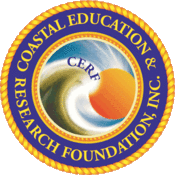Categorization of Nearshore Nourishment Mobility Using Empirical Depth of Closure Methods
ABSTRACT
McPherran, K.A.; Krafft, D.R., and McFall, B.C., 0000. Categorization of nearshore nourishment mobility using empirical depth of closure methods.
Adding sediment to an active beach profile as a nearshore nourishment can offer various benefits. These benefits frequently relate to cost-effectively providing a dynamic sediment source and potentially dissipating wave energy. Both positive impacts and costs of nearshore nourishments are strongly influenced by depth, so project placement depth is commonly assessed early in project planning. Project depths are often compared to the depth of closure and past examples following an “active” or “stable” classification. Nearshore nourishments are generally defined as “active” if they move quickly and “stable” if they do not move or move slowly. These definitions vary between examples, so the concept is revisited with a compilation of 40 case studies and a new classification system is proposed. Using these data, nearshore nourishments are classified as “very active”, “moderately active”, or “stable to slightly active” using two techniques to calculate the depth of closure from sediment characteristics and wave data. Measurements of net sediment transport rates decrease between the historical “very active”, “moderately active”, and “stable to slightly active” examples. Substantial variability occurs, but this grouping outperforms previous techniques and contains additional information, including the normalized berm migration rate (NBMR). The NBMR (berm migration rate normalized by initial berm placement length) is taken into consideration in this new classification system, which addresses shortcomings of previous methods by incorporating both the temporal scale of migration and the initial size of the nourishment. The mean NBMRs for “very active,” “moderately active,” and “stable to slightly active” categories were 16.1, 3.1, and 1.3 (m3/month)/m, respectively. The NBMR for all 40 historical sites ranged over almost two orders of magnitude (0.0–83.7 [m3/month]/m), highlighting the need for an updated classification system that takes initial berm size and temporal scale into consideration. This new classification system aims to improve rapid, scoping-level estimations of nearshore nourishment stability.
Contributor Notes

